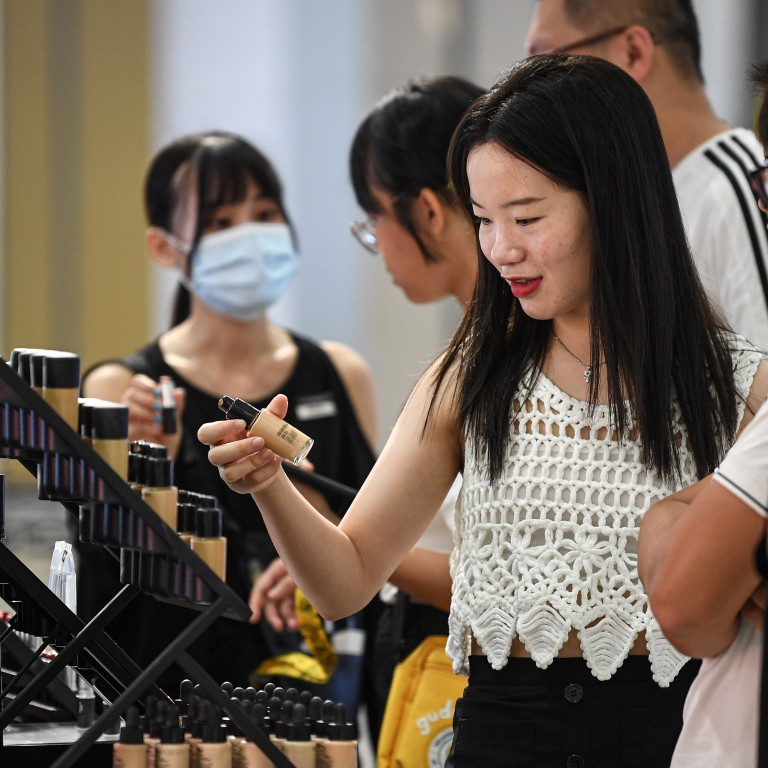
Chinese demand for luxury goods prompts new Hainan supply route as the coronavirus pandemic boosts domestic spending
- Alibaba’s logistics arm is boosting the supply of luxury goods for Chinese shoppers unable to travel, with a new cargo route between Singapore and Hainan island
- The luxury goods market in China grew 48 per cent in 2020, and the surge in duty-free spending in Hainan is key for brands reliant on Asia to ride out Covid-19
Alibaba’s logistics arm is launching direct cargo flights between Singapore and China’s Hainan island to boost the supply of luxury goods for Chinese shoppers after the pandemic halted global travel.
The company plans to run seven return flights a week between Singapore and the southern free-trade port, while looking to open additional freight routes between Hainan and other countries in the region, like Japan and South Korea.
Cainiao’s move to bring more handbags and watches into China comes as companies pivot their strategies to take advantage of the more than US$110 billion of luxury spending trapped there. Before the pandemic, Chinese shoppers bought a majority of their luxury goods abroad.

The bikini-clad women riding the wave of China’s surfing adventure
The pandemic has helped achieve the Chinese government’s goal of bringing spending back home, and efforts like Cainiao’s will help keep it there even as travel restarts.
“The Chinese government is sparing no effort” to bring back Chinese spending into China, said Amrita Banta, managing director at luxury consultancy Agility Research. “It pushes local duty-free operators to up their game, encourages top foreign operators to enter the market and creates a legal framework which favours local consumption.”
Zhao said Cainiao expects to open direct cargo routes to link Japan, South Korea, Australia and New Zealand to Hainan this year. The company is also considering flights to Europe as a longer-term goal, depending on demand and the pandemic, he said. He expected the size of Cainiao’s cargo volume through Hainan would grow more than tenfold within three years.
“Hainan will be a pivotal priority for Cainiao’s global supply chain in the coming years,” he said.


Founded by Alibaba in 2013, Cainiao oversees more than 3,000 logistics and shipping partners, orchestrating deliveries carried out by millions of people across China.
China’s government in July tripled the annual limit for such purchases to 100,000 yuan (roughly US$15,400) per person and removed a cap of 8,000 yuan for any single product, part of an effort to get wealthy Chinese to shift spending back to China rather than on trips abroad. In early January, Hainan’s duty-free sales averaged 180 million yuan a day – more than three times the year-earlier level – according to the local government.

